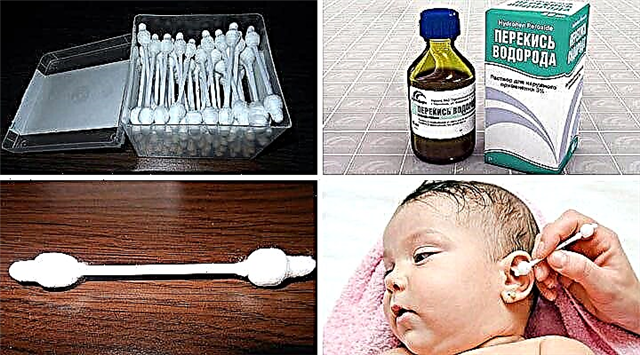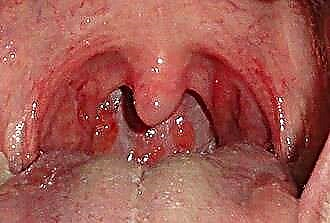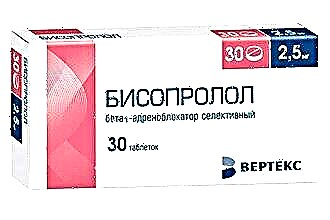Otitis media refers to infectious and inflammatory processes occurring in the airways of the middle ear. The severity of the symptomatic picture is determined by the virulence of pathogens that infect the mucous membranes of the ear. Inflammation of the ear cavity, Eustachian tube and mastoid process contributes to the development of auditory dysfunction, which is fraught with conductive hearing loss.
According to statistics, more than 30% of all otolaryngological diseases are due to various forms of otitis media. Children under the age of 15-16 get sick three times more often than adults, which is associated with low reactivity of the immune system. By the first three years of life, about 85% of children suffer from otitis media.
Etiology of the disease

ENT disease is accompanied by hyperproduction of liquid secretion, which contributes to its accumulation in the tympanic cavity. This leads to impaired drainage and ventilation of the Eustachian tube, as well as the formation of negative pressure in the ear cavity. Subsequently, deformation of the ear membrane occurs, which, under the influence of higher atmospheric pressure, is drawn into the ear, which causes severe discomfort and pain.
The main provocateurs of middle ear inflammation are infectious agents, which in 80% of cases penetrate into the organ of hearing by a tubogenic route. Experts have identified several key reasons for the development of ear pathology, which include:
- nasopharyngeal infections;
- decreased immunity;
- systemic diseases;
- nervous strain;
- endocrine disorders;
- pathology of the nasal septum;
- tumor-like formations in the ear;
- serious trauma to the skull;
- large pressure drops (mareotitis, aerotitis).
In children, the development of ENT disease is facilitated by adenoid vegetation, looseness of the mucous membranes of the ear, the close location of the Eustachian tube to the adenoids, and insufficient production of sulfur in the external auditory canal.
Important! Poor hygiene of the outer ear can lead to perforation of the ear membrane, which increases the risk of infection of the middle ear by pathogens.
Symptomatic picture
Clinical manifestations of lesions of the hearing system by infections depend on the type of inflammatory reaction, the place of its localization and the pathogenicity of pathogens. ENT disease can occur in an acute form, characterized by the severity of local manifestations, or chronic, i.e. with periodic exacerbations. In this regard, several types of otitis media are distinguished, namely:
- secretory (exudative) - ear pathology characterized by a violation of the drainage of the Eustachian tube. Decreased patency of the auditory canal is provoked by tissue edema. Subsequently, serous exudate begins to accumulate in the tympanic cavity, the appearance of which leads to the development of hearing loss, autophony and a sensation of fluid transfusion in the ear;
- adhesive (adhesive) - inflammation in the ear cavity, accompanied by the formation of fibrous filaments, the hardening of which contributes to a decrease in the elasticity of the tympanic membrane and limited mobility of the auditory ossicles. With the development of the disease, the pain syndrome is practically absent, however, as tissue trophism deteriorates, hearing decreases and hearing loss develops;
- purulent - an advanced form of catarrhal inflammation, which is characterized by the formation of purulent contents in the tympanic cavity. The provocateurs of purulent processes are mainly bacteria or fungus. Before the perforation of the ear membrane under the pressure of pus, the patient feels acute pain in the ear and a rise in temperature. However, after the evacuation of the purulent masses, the local manifestations of the disease almost completely disappear;
- tubo-otitis (eustachitis) is an inflammation of the mucous membrane in the Eustachian tube, provoked by the pathogenic flora contained in the nasopharynx. Due to tissue edema, the auditory canal becomes clogged, which impairs ventilation of the middle ear. This becomes the cause of the formation of negative pressure in the ear cavity. The patient feels acute pain when sneezing or coughing, associated with a feeling of ear congestion resulting from congestion.
In more than 70% of cases, patients develop bilateral otitis media, which is characterized by damage to both ears at once. If the pathology is not treated in a timely manner, a large number of adhesions can form on the auditory ossicles, which is fraught with dysfunction of the auditory analyzer apparatus. Therefore, if you experience pain, noise or congestion in your ears, you should seek help from an otolaryngologist.
The most dangerous form of the disease is purulent and adhesive otitis media. Untimely medical assistance can cause the development of deafness, mastoiditis and other serious complications.
Otitis media treatment
Early therapy in combination with complex therapeutic measures will improve health status within 1-2 weeks. The process of restoring auditory function begins with the elimination of pathogens in the lesions. Thus, it is possible to achieve tissue regeneration, relieve edema and, accordingly, normalize the ventilation and drainage functions of the Eustachian tube.
The main medicines used in the conservative treatment of ENT diseases include:
- glucocorticosteroids ("Prednisolone", "Dexamethasone") - reduce the activity of catarrhal processes, which helps to eliminate puffiness;
- systemic antibiotics ("Azithromycin", "Cefazolin") - destroy the cellular structures of bacteria, which leads to a decrease in the number of pathogens in the foci of inflammation;
- antiallergic drugs ("Clemastin", "Suprastin") - prevent tissue edema and mucus formation, due to which the amount of serous exudate in the ear cavity decreases;
- vasoconstrictor drugs ("Naphtizin", Sanorin ") - promote the expansion of the lumen in the Eustachian tube, which leads to the normalization of its drainage function;
- biostimulants ("Actovegin", "Apilak") - help to increase the body's resistance to the effects of opportunistic microorganisms;
- antipyretics (Panadol, Tylenol) - relieve inflammation, which helps to eliminate febrile temperature.
Important! Aminoglycosides should not be used to treat otitis media due to their toxicity and ability to affect hearing function.
Operative treatment
Pharmacotherapy does not always achieve the desired results in the treatment of otitis media. In the case of the rapid spread of inflammatory processes, the risk of brain infection and the development of serious complications increases, which include purulent meningitis, venous sinus thrombosis, epidural abscess, etc.
Important! Untimely removal of purulent foci from the ear cavity can be fatal.
After a thorough examination, the specialist determines the optimal method of surgical intervention and the subsequent volume of surgical measures. With the development of ear pathology, the following methods of surgical treatment are used:
- paracentesis - opening the ear membrane, followed by pumping out purulent masses from the ear cavity. Postoperative catheterization with the introduction of drugs into the auditory canal accelerates the regeneration of inflamed tissues;
- antrotomy - opening of the mastoid process (antrum), associated with drainage of the middle ear with medicinal solutions with antiseptic properties;
- myringotomy - the process of inserting thin tubes into the tympanic cavity, which help pump out serous contents from the middle ear. As the ear heals, the tubes will naturally be pushed out of the ear canal until they completely fall out.
Catarrhal processes occurring in the middle ear lead to the accumulation of serous fluid in it. This causes degradation of the mucous membranes and impairment of auditory function. To eliminate the pathology, drug treatment is used, however, with an increase in the risk of complications, they resort to surgical intervention.



